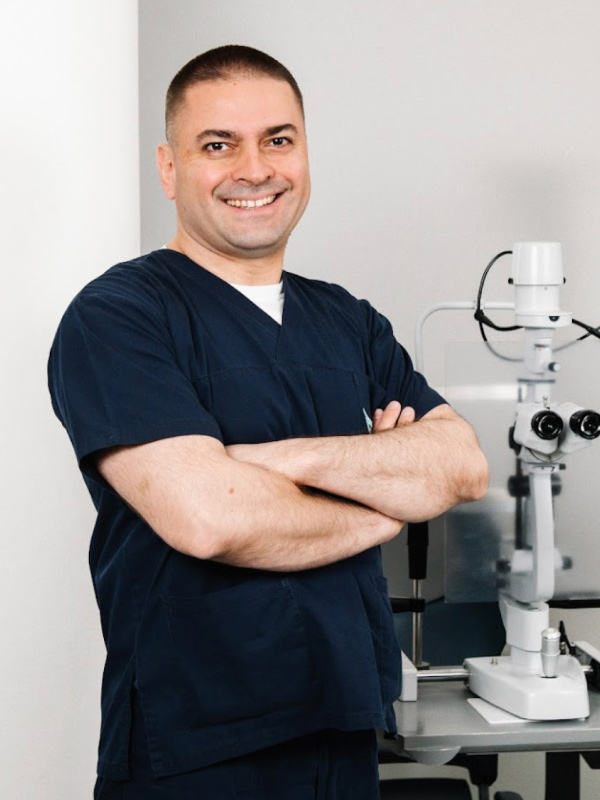Transform your vision with cataract surgery
Discover the incredible transformation that occurs as individuals regain clarity, confidence, and joy in their daily lives after overcoming cataracts
Rediscover clear vision
After cataract surgery, you'll experience remarkable relief from the discomfort of cloudy vision. Say goodbye to headaches and blurry sight as you enjoy a sharper, clearer perspective on life. Everyday tasks will become simpler, allowing you to fully pursue your passions and embrace life with renewed energy.
Embrace your freedom
Following surgery, you'll feel an incredible sense of liberation. The anxiety and frustration caused by poor vision will disappear, giving way to confidence and joy. You'll be able to fully immerse yourself in activities you love, without the constant worry of declining vision.
Live life to the fullest
Your daily experiences will be more vibrant and fulfilling. Enjoy reading, outdoor adventures, and quality time with family and friends without the need for multiple pairs of glasses. Every moment becomes an opportunity to enjoy life’s beauty and pursue your passions.
A newfound confidence and outlook
Friends and family will notice your brighter outlook and active lifestyle. Your renewed clarity and enthusiasm will inspire others as you show that life can be vibrant at any age. Your confidence will set an example that age is just a number.
Transform your vision with cataract surgery
Discover the incredible transformation that occurs as individuals regain clarity, confidence, and joy in their daily lives after overcoming cataracts

Embrace your freedom
Following surgery, you'll feel an incredible sense of liberation. The anxiety and frustration caused by poor vision will disappear, giving way to confidence and joy. You'll be able to fully immerse yourself in activities you love, without the constant worry of declining vision.

Live life to the fullest
Your daily experiences will be more vibrant and fulfilling. Enjoy reading, outdoor adventures, and quality time with family and friends without the need for multiple pairs of glasses. Every moment becomes an opportunity to enjoy life’s beauty and pursue your passions.
Experience clear vision in 3 simple steps
Cataract treatment options can feel overwhelming, but we’ve made the process as easy and clear as possible


Step 1: REACH OUT
Your journey starts with reaching out to us. Call us at +387 70 330 015, or book an appointment online to schedule your appointment. This is your first step toward understanding your eye health and discovering the best solution for your vision.


Step 2: We'll meet
During your appointment, our team will thoroughly examine your eyes to see how cataracts are affecting your vision. We’ll discuss your goals and explain the surgery process, including the different lens options that can suit your lifestyle. By the end, you’ll have a clear understanding of how surgery can improve your vision and your life.


Step 3: REGAIN YOUR FREEDOM
After surgery, you’ll be amazed at how clear and bright the world becomes. You’ll be able to read small print, enjoy vibrant colours, and notice all the details around you. Many of our patients are thrilled with how much easier their daily activities and hobbies become without cataracts holding them back.
Everything you need to know about cataract surgery
Explore the benefits, process, and answers to your questions about cataract surgery to help you regain your sight and improve your quality of life
Feeling overwhelmed by cataracts?
If so, now is the time to book an appointment and take charge of your vision.

Living with cataracts and noticing the effects?
Is your vision becoming blurry or cloudy, making everyday tasks more challenging? Cataracts can significantly impact your daily routine and well-being. Scheduling an appointment could be the first step toward regaining clear vision and improving your quality of life.

Recently diagnosed and unsure of what to do next?
If you’ve recently been diagnosed with cataracts, it’s natural to feel uncertain about what lies ahead. Cataract surgery is a proven and effective solution. An appointment can help you get the information you need to feel confident about taking the next steps.

Having trouble with both glasses and cataracts?
Managing both glasses and cataract-related vision problems can be frustrating and limit your independence. Cataract surgery may provide clearer vision and reduce your dependence on glasses. Booking an appointment is the first step to a more comfortable and enjoyable life.
Join thousands who have achieved freedom from glasses and contacts
Learn how they overcame their dependence, and find out how you can, too
We have replaced the images of the actual patients who provided these testimonials to protect their privacy
FAQs and information about vision correction
Everything you need to know about our practice and procedures
Academic resources on cataracts
Expand your knowledge about cataracts. (These links will take you away from our website)

Hi i'm Dr. Bojan Kozomara
With over 20 years of experience and a PhD in Ophthalmology, I am proud to be a leading expert in eye health.
As the Director of the Special Ophthalmology Hospital "Dr. Kozomara," I have performed numerous successful surgeries, specialising in vitreoretinal and phacoemulsification procedures.
My commitment to personalised care and deep expertise allow me to provide trusted, high-quality treatment.
My greatest reward is seeing my patients thrive with improved vision.
Dr Kozomara

















